Note: This website was automatically translated, so some terms or nuances may not be completely accurate.
Let's Return to Ohno ~ Regional Revitalization in a Certain Basin~

Keita Kusaka
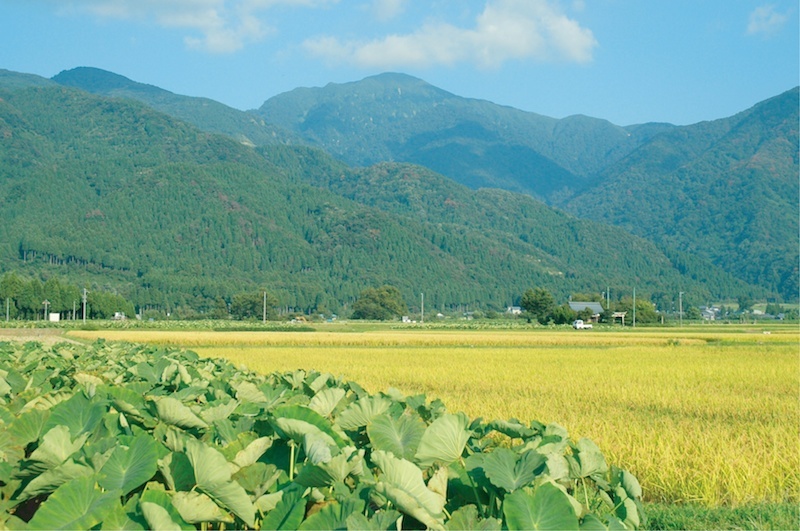
From Osaka to Fukui, it's a two-hour ride on the Thunderbird limited express. Then you transfer to the Echizen-Hokuriku Line, a single-track line with trains running only every two hours. After crossing about three mountains, just as you're wondering where this is taking you, suddenly the plains open up. That's Ōno City in Fukui Prefecture. A beautiful basin with a population of 34,000. I'm involved in a regional revitalization project here.
Ono City's challenge is population decline. Twenty percent of citizens in their 20s and 40% in their 30s are leaving the city. The outflow of child-rearing families is particularly problematic. After all, without this demographic, the number of children won't increase. To address this, we planned and launched the "Come Back to Ono" project, which, true to its name, promotes returning to the city.
The first phase of the project is the "Ono Poster Exhibition."
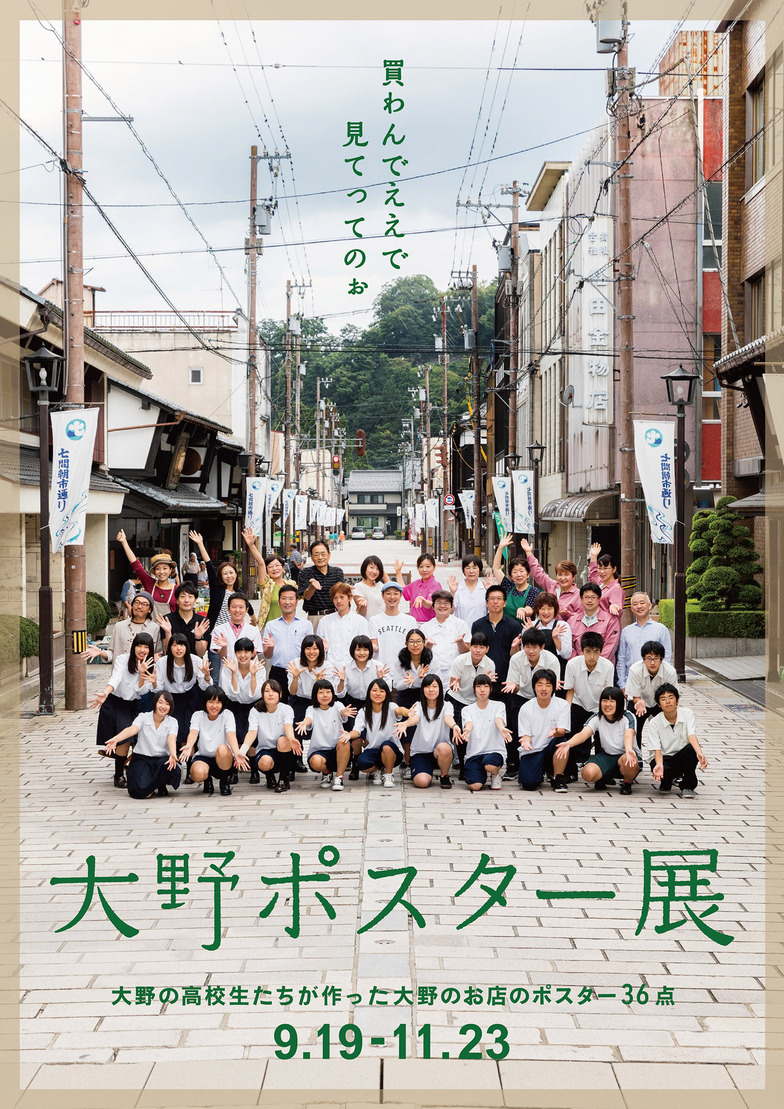
Unlike the usual shopping district poster exhibitions, the Ono Poster Exhibition involves local high school and university students creating the posters. Previously, shops were the main focus, but this time, the students take center stage.
This is because Ono City lacks a university, leading many young people to leave. In fact, about 60% of Fukui Prefectural Ono High School graduates move out of the city. We can't tell them "Don't leave." However, leaving after discovering the local charm is vastly different from leaving without knowing it. That's why we wanted them to understand this through poster creation.
Advertising creation fundamentally involves finding the positive aspects of a subject and communicating them in a more accessible way. So, even if someone dislikes their hometown, we force them to discover its good points. It's a very effective way to understand the local area.
We had three main goals. First, rediscovering the local area's appeal. High schoolers often think they know their hometown's charm but actually don't. We hoped the poster project would make them notice it.
Second, connecting them with interesting adults in the community. There are quite a few people who've returned to the area and are doing fascinating things, like running specialty coffee shops or dance studios. The adults high schoolers know are usually just their parents, relatives, or teachers. They have an extremely limited number of role models. Adults thriving locally make excellent examples. Connecting these adults with the high schoolers was incredibly meaningful.
Third, helping high schoolers realize, "I have the power to energize this town." A good poster can energize people, make them smile, and even energize the town itself. Experiencing that and grasping, "I can do this too," might inspire them to take action someday when they return, using their own power to revitalize the town.
Having organized poster exhibitions before, the idea for a "High School Poster Exhibition" came relatively easily. But execution was far harder than planning! This might be the reality of regional revitalization work. You're dealing with strangers in an unfamiliar place. Even if you think, "It's a great idea, they'll surely cooperate easily!" it takes time.
Honestly, I wanted the poster exhibition to be part of the school curriculum, but schools have fixed schedules. They can't take responsibility for anything happening during class time (understandably). So, it became a voluntary summer activity for students.
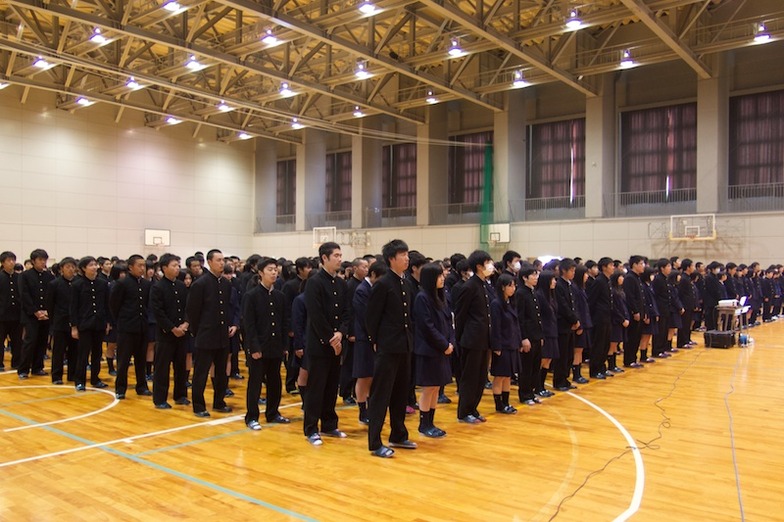
The schedule was finally set, but I didn't know if students would actually come. I visited the school repeatedly to explain that first, I needed to get them interested in making posters.
Then, I got the chance to explain it to the entire student body during the morning assembly on Founding Day! So, I traveled from Osaka to give a five-minute presentation at the start of the 8:45 AM assembly. I also held an information session for about ten interested students in the science room after school, bathed in the gentle afternoon light. That's how this strange old man ended up visiting the high school multiple times. I was really worried about how many would show up, but in the end, 36 students gathered. Each student took charge of one store's poster, and we ended up creating posters for 36 stores.

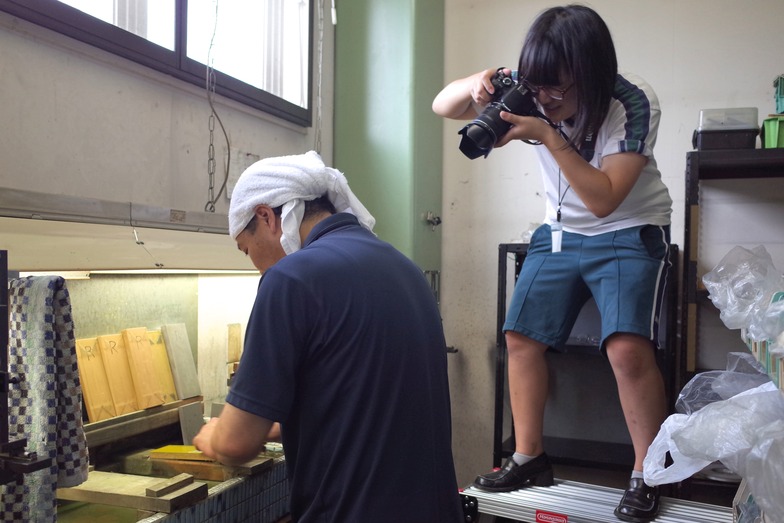
Over four days during summer break, six instructors taught us intensively in a workshop format. The instructors were five creators from Dentsu Inc. and one local designer.
Two of the Dentsu Inc. instructors, Mr. Egami and Mr. Uemura, were actually from Ono City. And miraculously, they were classmates! Truly "returning home in glory." Though what they ended up displaying were posters.
The students handled the planning and photography. Since most couldn't use Macs, we did the final design work. We confirmed details with the students at every step, carefully laying out the designs to faithfully capture their vision.
We had experiences you'd never get normally: shooting in a beautiful taro field in midsummer, or spending an hour in complete silence with a high schooler at a ramen shop still preparing to open, finding nothing to talk about. The biggest lesson I learned this time? To get close to high schoolers, start calling them by nicknames right away.
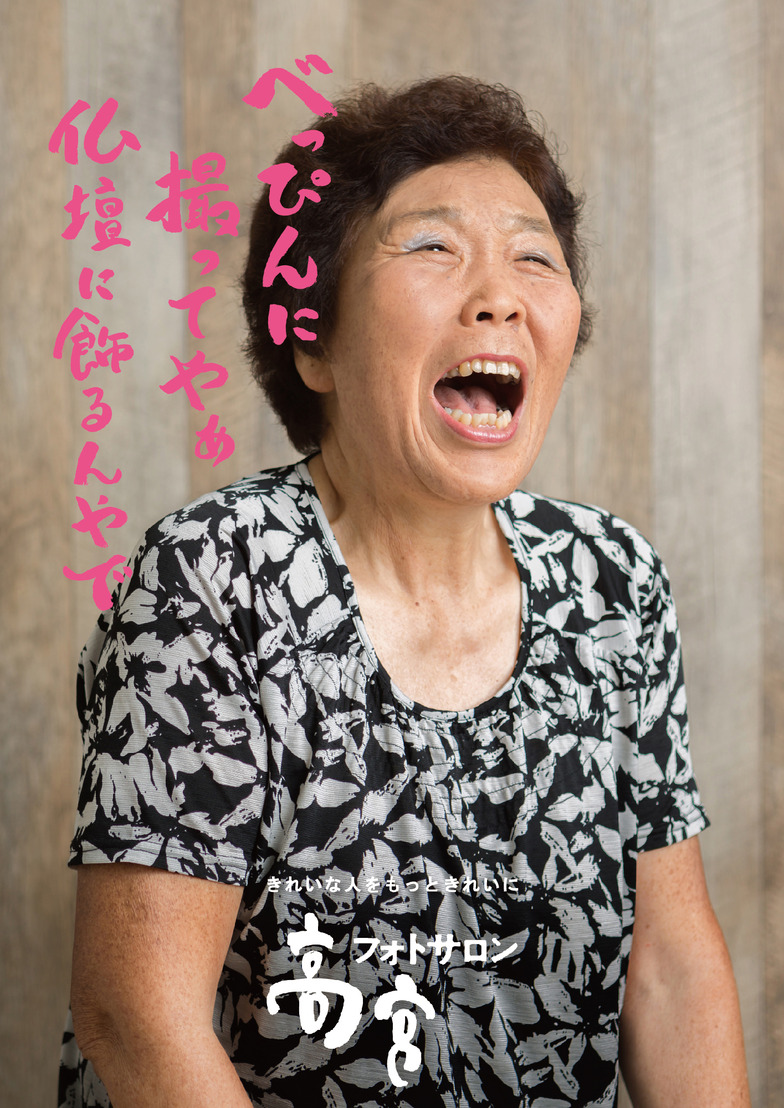
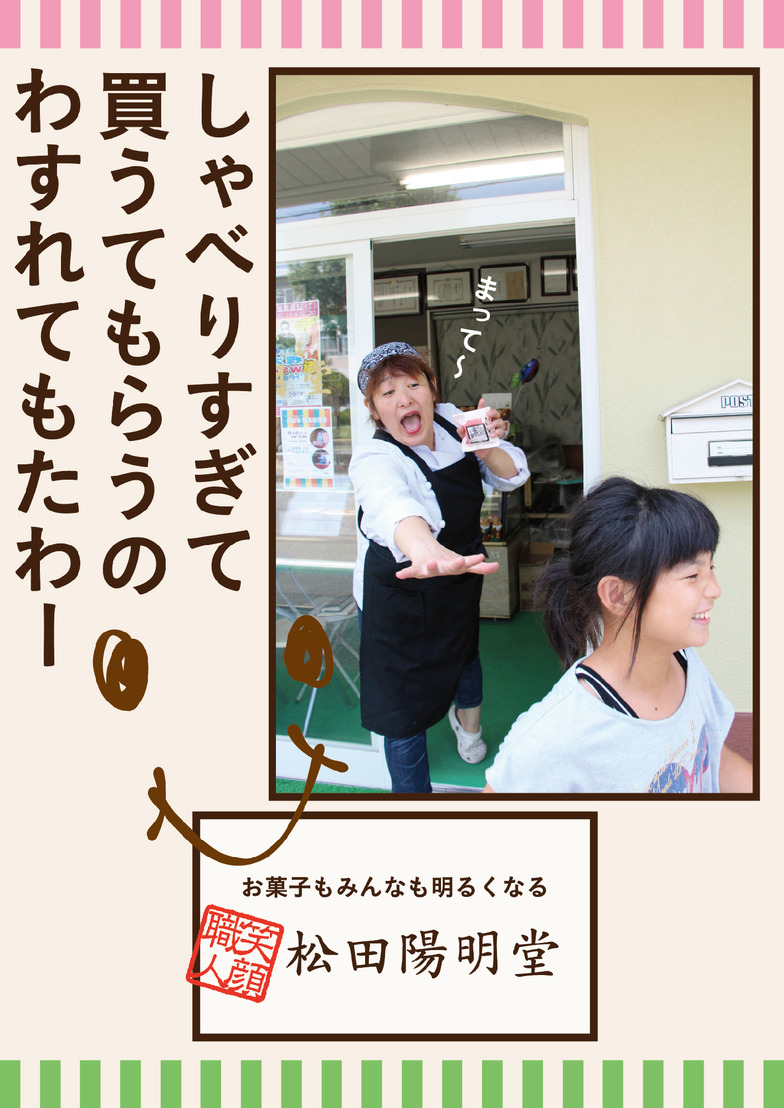
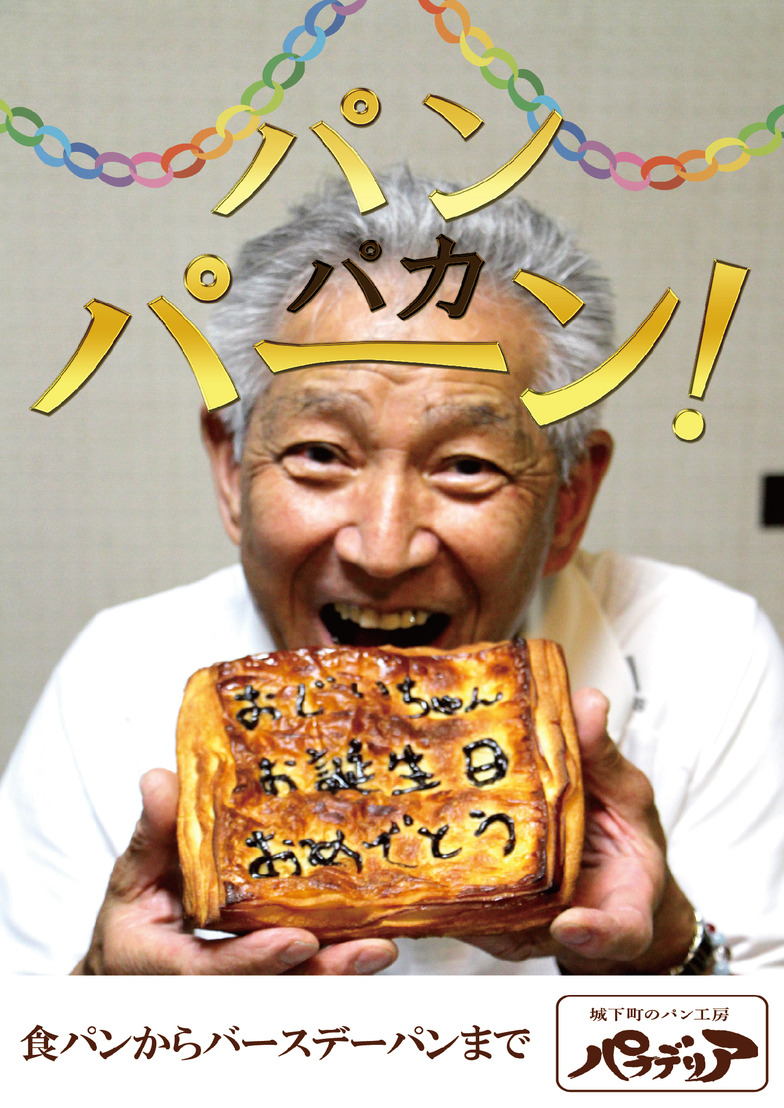
The posters were displayed in the town center, at the station, and in shopping centers. The total number of votes cast in the popularity contest exceeded 10,000. The poster exhibition was beloved by citizens and generated a huge response both within and outside Ono City, with comments such as, "I never imagined advertising alone could make the local area look this wonderful," and "A town where such a poster exhibition can be held makes me want to move here." Responding to citizens' voices asking for it to continue, it is planned to be held again next year.
And turning the wish for people to return into song
The second phase involved several local adults giving talks at high schools. The third phase is the "Come Back to Ono Music Project." This involves creating an original song titled "Come Back to Ono" and having parents sing it to their children at graduation ceremonies.
While planning various U-turn initiatives, we realized parents often feel, "We want them to come back, but we can't quite say it." It's hard to tell children about to set off in pursuit of their dreams, right? Plus, there's probably some embarrassment involved. But ultimately, they do want them to return. However, the timing often comes when the children are deciding on jobs, and to the kids, it feels like, "Why bring it up now...?"
Also, I thought it was novel and fresh for adults to loudly ask, "Please come back." It's the opposite of Kikuzo Yoshida's "We're Going to Tokyo."
For the songwriting, I consulted Keisuke Tominaga, a producer at the music production company PIANO. Since the message I wanted to convey was clear, he suggested writing the lyrics first before composing the music. So, I wrote the lyrics. Now, let's read the lyrics.
Let's Return to Ōno
Mountains cut off the world
The world seems to be just this town
Time passes in harmony with nature
People live at a slow pace
The sunset illuminates the rice fields
Taro leaves sway gently
Children of this small town
Set out on a journey seeking dreams
Let's return to Ono
I can't say it, so I'll make it into a song
Let's go back to Ono
It's good to go out into the wide world
Because Ono will always be waiting
Rivers race through the basin
Water permeates everything
When snow piles up, we shovel it
Living each day unchanged
As the long winter begins to waver
When snow turns to water
You, growing into an adult
Will leave this town
Let's return to the great fields
I can't say it, so I'll make it into a song
Let's go back to Ono
Go out into the wide world
Ōno will always be waiting
Chase your dreams
Meet friends
Fall in love
Grow strong
Sometimes
I want you to remember
That we are here
Let's go back to Ohno
Because I can't say it, I'll make it into a song
Let's go back to Ono
Go out into the wide world
Ōno will always be waiting
Everything was a first attempt, and there were twists and turns
I visited Ōno about 50 times, listened to many stories from the people of Ōno, gathered my thoughts, and wrote the lyrics. I completely set aside my own ego, discarded any scheming thoughts like "this will be interesting," and simply became a conduit, listening intently to the voices of people and nature. I was able to write lyrics I'm satisfied with.
For the composition, I asked Takuma Matsushiba from PIANO. I had him come to Ōno, feel the place, and create the melody.
I had two requests:
1. Make it a standard song that can be sung for generations.
2. Make it a bright song, a cheerful anthem for high schoolers setting out on their journeys. (Because if the music were sad with these lyrics, it would be too melancholy.)
When the demo was ready, I thought it was perfect. My two-year-old daughter started singing it after hearing it just once. Everyone around me said, "This will make you cry."
We had a great song. Now it was just a matter of whether the school and parents would like it. If they didn't, that would be the end of it. Nervously presenting it, both the school and the PTA readily agreed. The song was good, but how would we actually make it happen at the graduation ceremony? Would we even get the time for it at the ceremony?
It was all a first-time endeavor with many twists and turns, but the team at Ono City Hall worked tirelessly, and we managed to sing it at the graduation ceremony. The plan was good, but execution was tough. Just like the poster exhibition before.
Through the students, the school distributed CDs and lyrics to every household. Then, we scheduled two practice sessions. I was anxious, wondering what if no one showed up.
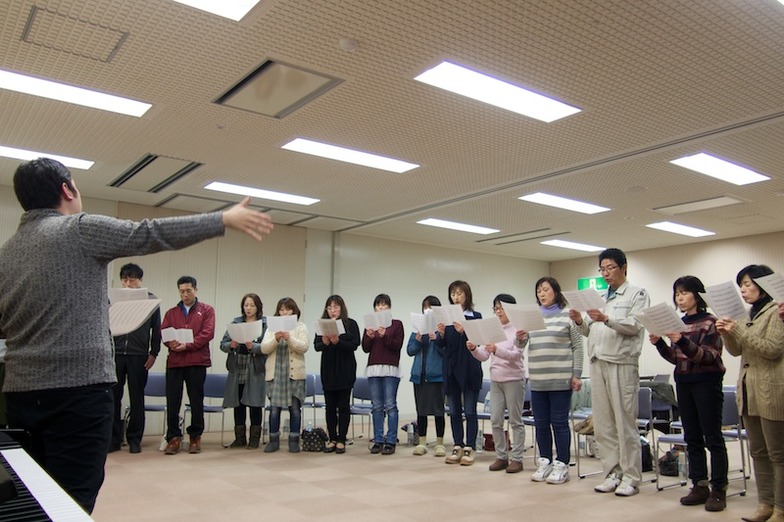
But the PTA president took the lead in bringing them, and about 20 people came from each group. Still, only about 10% of the parents actually showed up. I was filled with doubts—would the remaining 90% actually sing?
And then, the actual performance. I don't want to say too much, so please watch the video.
If possible, I'd love for you to watch the full version with the entire song included.
Full Version
Short Version
The true impact of "Let's Return to Ono" is that more young people are coming back to Ono.
The next day, the Fukui Shimbun and the Fukui Kenmin Daily gave it major coverage. They printed the entire lyrics. It's truly rewarding for someone involved with words. "It really was just like the lyrics," the PTA president told me.
Current students are asking their parents, "Please sing this when I graduate," and the PTA is saying they want to keep singing it. A grandfather with grandchildren came to pick up a CD, saying his daughter graduates in two years and he wants to practice now. Students from the brass band came to get the audio file, saying they want to perform it next year. Maybe next year we'll have a live performance of "Let's Return to Ono." I believe we've created something lasting.
The song has reached not only high school students but also Ono citizens, and even people who have already left Ono. They shared the video one after another, saying, "Ono, where I grew up, is a great town, right?" Things they wanted to convey but found hard to express before. Having the video as a catalyst makes it easier to say. The song and the video are becoming a great opportunity to feel pride in their hometown. That truly makes me happy.
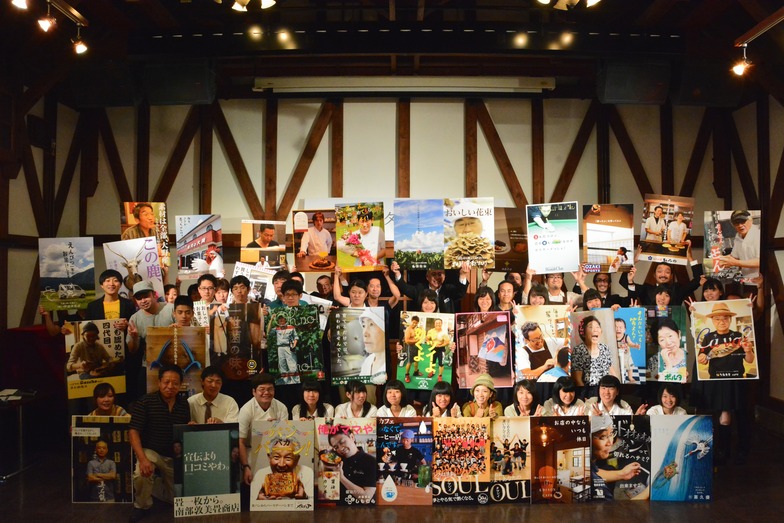
The true effect of "Let's Return to Ono" is that more young people come back to Ono. The results won't show for many years. What we did stirred emotions, but whether it's a success remains unclear. Still, when I saw the students who made the posters happily mingling with the local adults they met at the exhibition, working hard in the community, I felt sure we hadn't done the wrong thing.
If we keep steadily doing things like this, I believe some will surely choose to stay in Ono or return, becoming one of the adults who will lead this town.
The "Let's Return to Ono" project continues next year. Please keep watching over us warmly.
Was this article helpful?
Newsletter registration is here
We select and publish important news every day
For inquiries about this article
Author

Keita Kusaka
Born in Osaka in 1976. After traveling the world—including Tibet, Kashmir, and Afghanistan—he joined Dentsu Inc. While working as a copywriter, he also serves as a photographer, a member of the Self Festival executive committee, and the leader of the UFO-summoning band "Ember." He organized the 'Shopping District Poster Exhibition' and received the Keizo Saji Award. Other awards include the Tokyo Copywriters Club Best Newcomer Award and the Yukinomachi Fantasy Literature Award. He also contributes as a photographer to "ROADSIDERS' weekly," edited by Kyoichi Tsuzuki. His blog 'Scenes with Gaps,' featuring scenes that beg for a witty retort, is updated daily. He left Dentsu Inc. in 2021. <a href="http://keitata.blogspot.jp" target="_blank">http://keitata.blogspot.jp</a>